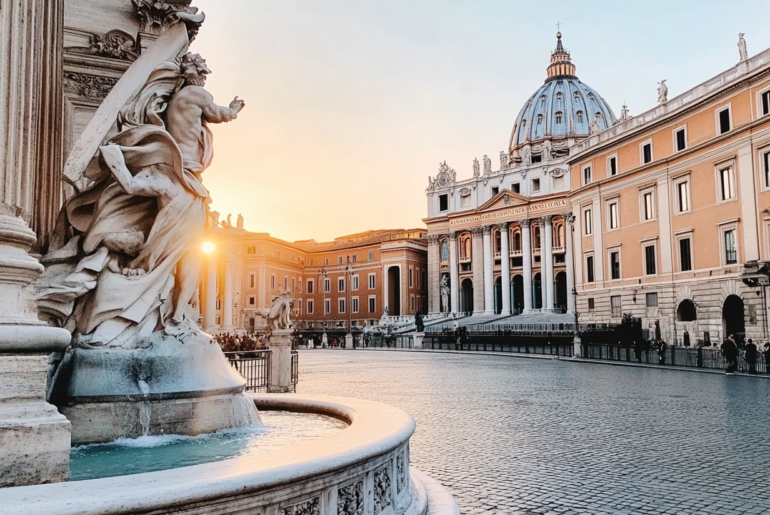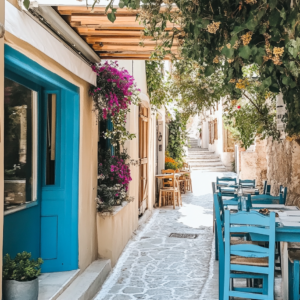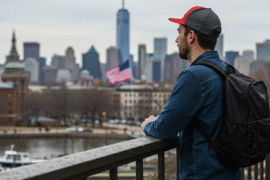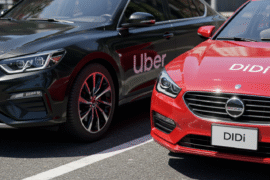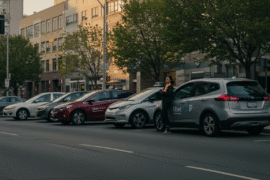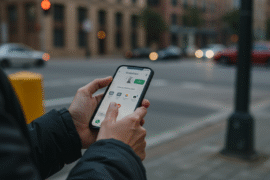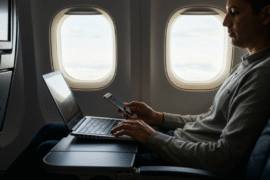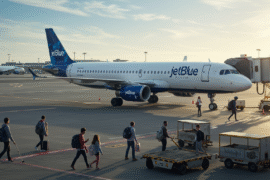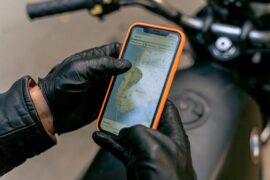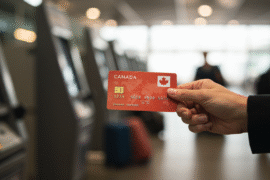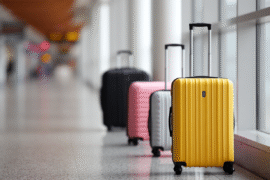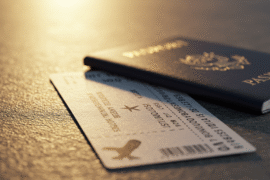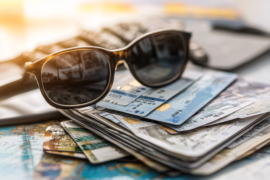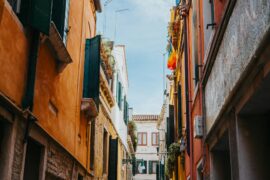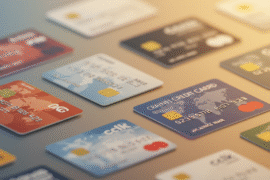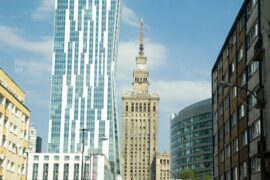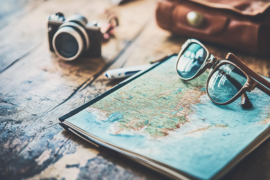This article may contain references to products or services from one or more of our advertisers or partners. We may receive compensation when you click on links to those products or services. Nonetheless, our opinions are our own.
The information presented in this article is accurate to the best of our knowledge at the time of publication. However, information is subject to change, and no guarantees are made about the continued accuracy or completeness of this content after its publication date.
A trip to Vatican City is an unforgettable experience, but many travelers worry about the cost. From entrance fees to food and transportation, it might seem like you need a big budget to explore this historical and artistic wonder.
But what if you could see all the highlights—Vatican Museums, St. Peter’s Basilica, and the Sistine Chapel—without overspending?
With the right approach, you can visit without breaking the bank. All it takes is smart planning, knowing the best times to go, where to book, and how to get the most out of your trip.
So, are you ready to explore this iconic destination on a budget? Let’s get started!
- 1. Choosing the Right Time to Visit
- 2. Pre-booking Your Tickets
- 3. Finding Affordable Food Options Nearby
- 4. Explore Vatican City on Foot
- 5. Avoiding Tourist Scams and Unnecessary Expenses
- 6. Stay in Budget-Friendly Accommodations Nearby
- 7. Bring Your Own Water and Snacks
- 8. Maximizing Free Experiences
- Concluding It Up All Together
- Recommended Reads
1. Choosing the Right Time to Visit
One of the best ways to save money on any trip is timing it right. The destination is a year-round attraction, but peak seasons (April–October) come with higher prices and larger crowds.
If you want to enjoy a more relaxed and budget-friendly experience, consider visiting during the off-season (November–March) when accommodations and flights are cheaper.
Did you know that the Vatican Museums offer free entry on the last Sunday of every month? While this can mean larger crowds, it’s a great way to save on ticket costs. Also, planning your visit early in the morning or later in the afternoon can help you avoid crowds while still enjoying a full experience.
2. Pre-booking Your Tickets
One common mistake many first-time visitors make is buying tickets at the last minute. Purchasing in advance ensures a smoother experience and can also help avoid overpriced resellers.
For example, if you’re planning to explore the Sistine Chapel, it’s a good idea to book your Sistine Chapel tickets ahead of time. By doing this, you’ll skip long lines and gain more time to immerse yourself in the beauty of these iconic sites.
In many cases, bundled tickets that include access to multiple attractions offer better value and help streamline your visit. Plus, some sites also offer special discounts, so it’s always worth checking them before booking.
3. Finding Affordable Food Options Nearby
Food can be an unexpected expense for travelers, especially in tourist-heavy areas like the smallest country in the world. Restaurants near St. Peter’s Square often overcharge for average meals simply due to their location.
Instead, take a short walk a few streets away to find authentic and budget-friendly trattorias or cafés. These local spots serve delicious Italian dishes at reasonable prices.
Looking for an even cheaper option? Visit a bakery or local market and grab a fresh sandwich or pizza slice for a quick, affordable, and tasty meal.
4. Explore Vatican City on Foot
Once you arrive, there’s no need for taxis or buses—this destination is completely walkable! Everything, from St. Peter’s Basilica to the Vatican Museums, is within a short walking distance.
If you’re coming from central Rome, avoid expensive taxis and take public transport instead. The metro and buses are affordable and efficient, getting you close to Vatican City without the high costs of private transfers.
Walking not only saves money but also lets you take in the beauty of your surroundings at your own pace. Wouldn’t it feel better to save that transportation money and treat yourself to a delicious Italian meal instead?
Voted "Best Overall Budgeting App" by Forbes and WSJ
Monarch Money helps you budget, track spending, set goals, and plan your financial future—all in one app.
Get 50% OFF your first year with code MONARCHVIP
5. Avoiding Tourist Scams and Unnecessary Expenses
Like any major tourist destination, the country has its share of scams and overpriced services. Street sellers often try to convince visitors to buy “skip-the-line” tickets at inflated prices, even though they are widely available online at standard rates.
Similarly, souvenir shops near popular landmarks tend to mark up prices significantly. If you want authentic religious souvenirs or gifts, consider shopping at official gift shops or exploring local markets for better deals.
Even a little research beforehand can save you both time and money.
6. Stay in Budget-Friendly Accommodations Nearby
Accommodation is often one of the priciest parts of travel, but staying close to Vatican City doesn’t have to mean paying sky-high prices. Look into budget-friendly options in charming neighborhoods like Prati or Trastevere, both just a short walk from this destination.
These areas offer affordable guesthouses and hotels, providing an opportunity for a more authentic Roman experience, far removed from the crowded tourist zones. Not only will this save you money on your stay, but these neighborhoods also allow you to enjoy the true local culture.
You can explore hidden cafés and quaint streets that often get overlooked by typical tourists. This way, you’ll spend less on accommodation and get a chance to experience a more genuine side of Rome.
7. Bring Your Own Water and Snacks
Exploring this destination can take several hours, and staying hydrated is essential—especially during warm months. But buying water and snacks nearby can be surprisingly expensive, with vendors charging much more than local markets.
A smart budget hack is to bring a reusable water bottle and refill it at the free water fountains (nasoni) found throughout Rome. These fountains provide clean, fresh drinking water, saving you from overpriced bottled water.
Similarly, pack small snacks like fruit, sandwiches, or granola bars from a local grocery store. They’ll help keep hunger at bay without forcing you to splurge at expensive tourist cafés.
In essence, it’s an insider tip to save money while staying refreshed and energized for your adventure.
8. Maximizing Free Experiences
While some attractions require tickets, there are plenty of free experiences that are just as rewarding.
St. Peter’s Basilica is free to enter and is home to Michelangelo’s Pietà and Bernini’s Baldachin.
St. Peter’s Square, designed by Gian Lorenzo Bernini, is a stunning place to soak in the grandeur of this country without spending a dime.
Papal Audiences on Wednesdays are free for those interested in seeing the Pope in person—but it’s best to reserve in advance.
There are also hidden gems within the country that most tourists miss. Exploring lesser-known courtyards and art pieces can add depth to your visit—and they’re all free.
Concluding It Up All Together
Visiting Vatican City doesn’t have to be expensive. With a little planning, you can explore its most famous sites without overspending.
By choosing the right time to visit, booking in advance, exploring on foot, and making the most of free attractions, you’ll enjoy an unforgettable experience—while staying on budget.

Reviewed and edited by Albert Fang.
See a typo or want to suggest an edit/revision to the content? Use the contact us form to provide feedback.
At FangWallet, we value editorial integrity and open collaboration in curating quality content for readers to enjoy. Much appreciated for the assist.
Did you like our article and find it insightful? We encourage sharing the article link with family and friends to benefit as well - better yet, sharing on social media. Thank you for the support! 🍉
Article Title: How To Visit The Vatican On A Budget Without Missing A Thing
https://fangwallet.com/2025/02/27/how-to-visit-the-vatican-on-a-budget-without-missing-a-thing/The FangWallet Promise
FangWallet is an editorially independent resource - founded on breaking down challenging financial concepts for anyone to understand since 2014. While we adhere to editorial integrity, note that this post may contain references to products from our partners.
The FangWallet promise is always to have your best interest in mind and be transparent and honest about the financial picture.
Become an Insider

Subscribe to get a free daily budget planner printable to help get your money on track!
Make passive money the right way. No spam.
Editorial Disclaimer: The editorial content on this page is not provided by any of the companies mentioned. The opinions expressed here are the author's alone.
The content of this website is for informational purposes only and does not represent investment advice, or an offer or solicitation to buy or sell any security, investment, or product. Investors are encouraged to do their own due diligence, and, if necessary, consult professional advising before making any investment decisions. Investing involves a high degree of risk, and financial losses may occur including the potential loss of principal.
Source Citation References:
+ Inspo
